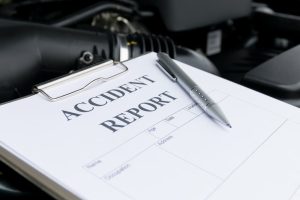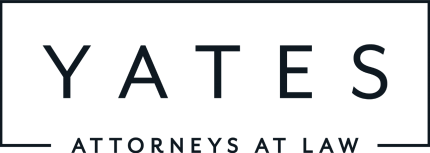The officer who responds to a car accident should write and file an accident report, called a collision report in South Carolina, with the state. While the report can provide crucial information about what happened, it doesn’t necessarily prove fault.
The accident report represents the officer’s findings and opinions about who caused the crash. Because the officers might rely on what others at the scene tell them, the report isn’t always factual. Sometimes, the insurance company looks for evidence to disprove the details in the report to avoid accepting liability for their policyholder. They might try to shift the blame to you, so they don’t have to pay your claim.
You should understand the ins and outs of an accident report and how to interpret each section. Below are the major parts you must pay attention to so you can discover errors or omissions that need to be corrected.
Page 1 of an Accident Report
 The first page of an accident report contains basic information and details regarding the crash.
The first page of an accident report contains basic information and details regarding the crash.
Incident Number
You can find the incident number in the upper left-hand corner of the first page. This number identifies the case. You can provide it when requesting a copy of the report or discussing it with the Department of Public Safety.
Accident Location
The location of the accident is at the top of the first page of the report. It includes details such as:
- Address
- The direction of travel for all vehicles involved
- Intersecting roads
Personal Details
You can find basic information about each person involved in the accident below the location information. This section includes the names, phone numbers, auto insurance carrier information, driver’s license number, and other details about each driver, passenger, and pedestrian.
Description of the Accident
Another part of the report is for the officer to describe the accident briefly. They can explain the events leading up to the collision, what each party was doing, and the locations of the vehicles immediately after. There’s also a section for the officer to provide a diagram or drawing of what happened.
Law Enforcement Information
The next section includes the reporting officer’s name, badge number, and rank. Many people overlook this part of an accident report because they think it’s useless for their personal injury case. However, knowing who completed the report is helpful. They can serve as a witness in a lawsuit and confirm someone else is at fault for your injuries.
Page 2 of an Accident Report
Page two contains additional details about the crash and the officer’s opinions about what contributed to the crash.
Injuries
The section at the top of page two lists each person’s injuries from the accident. There are also fields for the officer to fill out, such as:
- Airbag deployment
- Seat belt use
- Occupant ejection
- Transported to the hospital
Police officers don’t have the medical knowledge or experience to determine whether someone has injuries. The information they report is an observation. They might think you weren’t hurt in the crash because you don’t have visible injuries. However, you can have internal issues, such as whiplash, bleeding, or a concussion that isn’t immediately apparent.
Sequence of Events
Underneath the injury section is a place where the investigating officer can create a timeline for the accident. They will use evidence at the scene and eyewitness statements to reconstruct the sequence of events.
Presence of Drugs or Alcohol
Another section indicates whether law enforcement administered chemical tests on any of the drivers and if the tests detected drugs or alcohol.
Contributing Factors
Towards the bottom of the page is a section for the officer to select contributing factors. Contributing factors can help determine fault in a car crash. They can check off what they believe caused the accident, such as failure to yield, distracted driving, or speeding.
They can also use this section to take note of environmental factors and road hazards that might have contributed to the collision, such as debris in the middle of the road.
Vehicle Defects
At the bottom of the page is an area for mentioning defects. A vehicle defect can be one of the reasons an accident occurs. Maybe a defective braking system prevented the driver from stopping at a red light. However, the presence of a defect doesn’t conclusively determine whether it caused or contributed to the crash.
Injured in a Car Accident? Contact The Yates Firm Now
The Yates Firm provides aggressive and dependable legal representation to clients in South Carolina. We understand the challenges of getting hurt in an accident. Someone else is at fault and should be liable for your medical treatment and other expenses. You can count on us to fight for you. We will pursue the justice and compensation you deserve.
Call Myrtle Beach car accident attorneys of The Yates Firm today at (843) 692-3237 for your free consultation if you sustained injuries in a car accident due to someone else’s negligence.
Related Posts:


